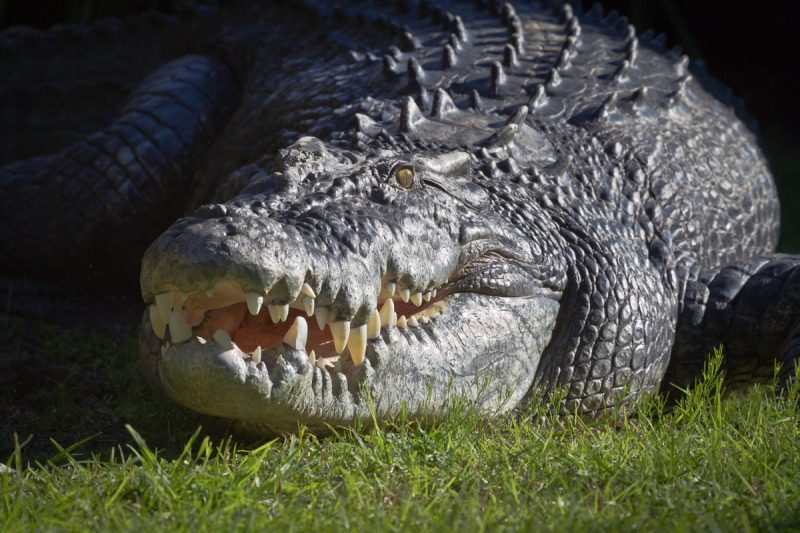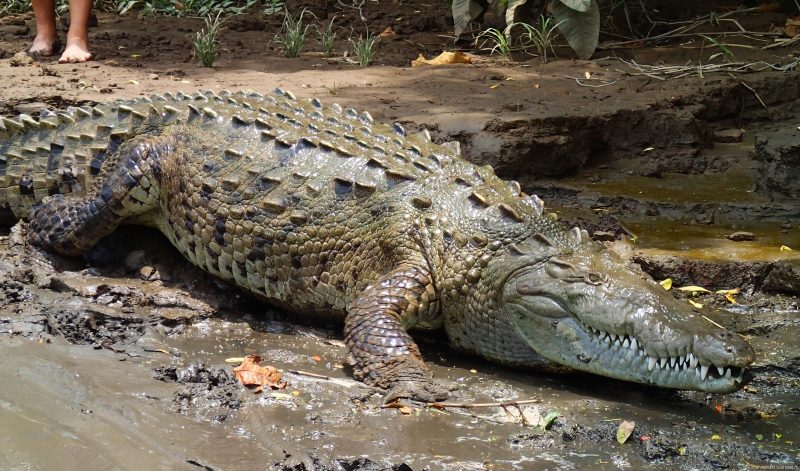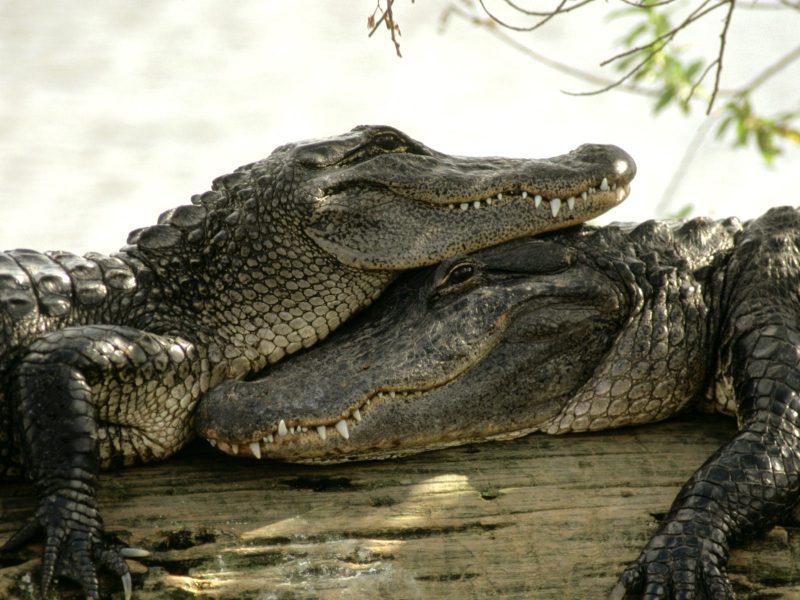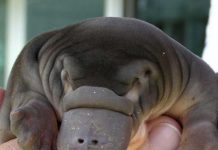The answer to the question, how many crocodiles live, is known by herpetologists. These reptiles have unique mechanisms of adaptation to the environment, their physiology is different from other earthly creatures, not fully understood and understood.
Material Content:
Wildlife Reptile Life
To the order of crocodiles include 3 families of reptiles:
- real crocodiles;
- alligators;
- gavialov.
All of them have approximately the same life expectancy.
A baby that has just hatched from an egg has little chance of survival. About 1 out of 100 crocodiles lives more than a year and reaches puberty. Young reptiles are hunted by predatory animals, birds, fish and even larger relatives. When crocodiles reach a weight of several kilograms, enemies become smaller.
In the wild, the life expectancy of adult crocodiles is an average of 50 years, but individuals and 80 years are found. Then they gradually lose their agility, strength, vigilance, and are killed by relatives. Big cats, anacondas and giant otters prey on American alligators. People destroy crocodiles for the sake of beautiful, high-quality leather, which is used to make handbags, shoes and other haberdashery products.
How many years do crocodiles live in captivity
In captivity, crocodiles live more than 100 years. The famous "old-timer", caught in Australia, celebrated at that time his 110th birthday. For the fighting character, the reptile was named Cassius Clay in honor of the famous boxer.
Cassius belongs to combed crocodiles; it was caught in the 80s of the last century for repeated attacks on livestock.At the time of the capture, the crocodile was, according to experts, about 80 years old, and his teeth were pretty twisted. Now the reptile's habitat is the zoo on Green Island. The weight of his body is about 1 ton, and the length is more than 5 meters.
Unusual animal organism
These amazing creatures appeared on Earth more than 250 million years ago. They successfully survived the global extinction that occurred 65 million years ago, when all dinosaurs disappeared from the face of the planet.
The mystery of the “reverse” evolution of crocodiles is still unsolved. There is speculation that they were once warm-blooded creatures and lived on land.
Other features of the physiology of crocodiles:
- Reptiles have a 4-chamber heart, which works like a 3-chamber heart while underwater. This prevents pulmonary artery congestion.
- During immersion in water, blood saturated with carbon dioxide begins to flow in the opposite direction, enhancing the normal generation of gastric juice by ten times. This mechanism helps crocodiles digest swallowed food.
- Crocodile teeth are not intended to be chewed. With sharp fangs, the predator tears up the prey. For better digestion, he swallows stones. Large cobblestones are found in the stomachs of crocodiles.
- Crocodile blood contains powerful antibiotics, this protects the reptile from infection and death in dirty water.
- Crocodile teeth grow throughout their lives, changing every two years. They have a conical structure, hollow inside, and a new tooth grows in the cavity of the old.
Features that distinguish crocodiles from other reptiles are also in the structure of the brain, it resembles a bird. The sensory organs are unique; vision and hearing are a priority, which is not typical for reptiles.
Crocodiles eyes are designed in such a way that they are best distinguished by objects located on the side of the body. The vertical pupil provides a large viewing angle, but what is located directly in front of the muzzle, reptiles do not see. In the dark, the eyes of crocodiles glow with an ominous red light.
Crocodiles touch the entire surface of the body. Sensitive points are located on the edges of the jaw and on the body. Horn shields on the back are so durable that they protect against bullets better than body armor. They are equipped with sensitive receptors that allow you to feel the vibration of the water when potential production comes to the watering hole.
Interesting Facts
Africa's largest Nile crocodile can defeat a lion, black rhino and hippo. This is the most dangerous predator that attacks in water and on land near water bodies.He deserved the notoriety of the cannibal, was an object of worship in ancient times.
Another lover of human meat is the combed crocodile. The reptile lives in mangrove swamps and river deltas, and can spend a long time in the ocean.
All real crocodiles and gavials have a complex regulatory system that allows them to live in salt water. Excess salt is secreted by special glands. In this case, combed crocodiles never drink sea water, and to save fresh fluid in the body, their excretory organs include a “special” regimen, separating pasty urine.















